This Ngorongoro Crater is the world's largest unfilled, intact, and inactive volcano, formed 2.5 million years ago from the collapse of a volcano, and is a renowned destination for safari tours in Tanzania. The spectacular Ngorongoro Crater, the world's largest caldera, is also referred to as 'the Garden of Eden'. Visiting the Ngorongoro Crater offers a remarkable safari experience, providing the opportunity to observe abundant wildlife in a breathtaking and unique setting. It is recommended to plan your visit in advance and consider combining it with other top Tanzanian destinations, such as the Serengeti National Park, for a comprehensive safari experience.
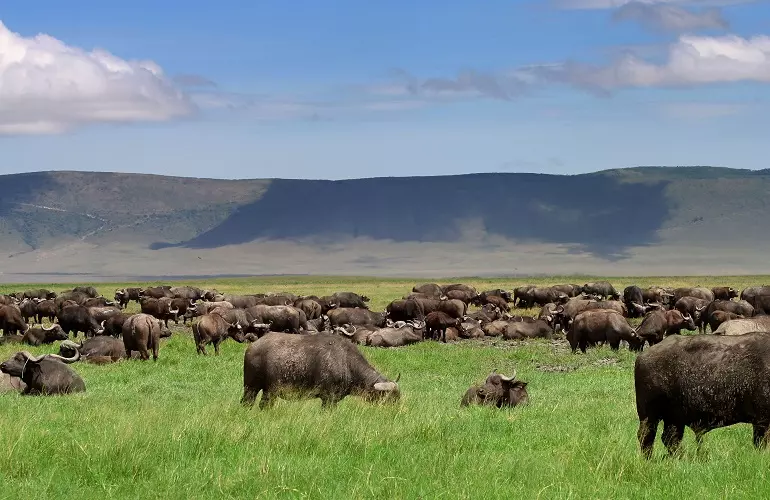
World's largest inactive volcano in Africa
Do you need a satisfied Ngorongoro Crater holiday tour?
Get a free, best price-guaranteed Ngorongoro Crater holiday tour quote and a quick response from us in 2024 and 2025. Call +255 747 989 416 on WhatsApp or email us at exploreafrica024@gmail.com to get a free quote. We are available 24/7 and we are happy to help you.
1. Ngorongoro Crater location
The Ngorongoro Crater is located in the Ngorongoro Conservation Area, which is a UNESCO World Heritage Site in northern Tanzania.
It lies within the greater Serengeti ecosystem and is situated about 180 kilometers (110 miles) west of Arusha.
2. Ngorongoro Crater Formation and Geography
The Ngorongoro Crater is a massive volcanic caldera formed millions of years ago from the collapse of a volcano.
It is the largest intact caldera in the world, with a diameter of approximately 19 kilometers (12 miles) and a floor area of about 260 square kilometers (100 square miles).
The crater floor is at an elevation of around 1,600 meters (5,250 feet) above sea level.
3. Ngorongoro Crater wildlife and biodiversity
The Ngorongoro Crater is home to an incredible concentration of wildlife, including the "Big Five" (elephants, lions, leopards, buffalo, and rhinoceros), making it a prime safari destination.
The crater's varied ecosystems support a diverse range of species, including wildebeest, zebras, gazelles, hyenas, cheetahs, hippos, and an abundance of birdlife.
The enclosed nature of the crater creates a natural sanctuary where wildlife is protected and can be observed in close proximity.
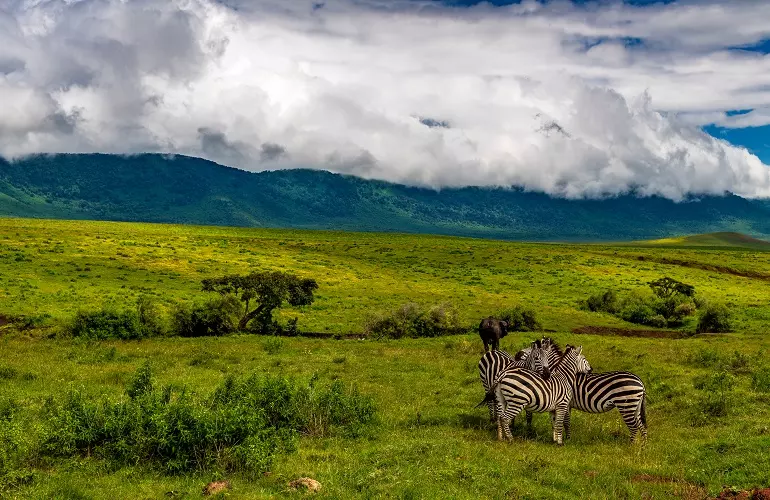
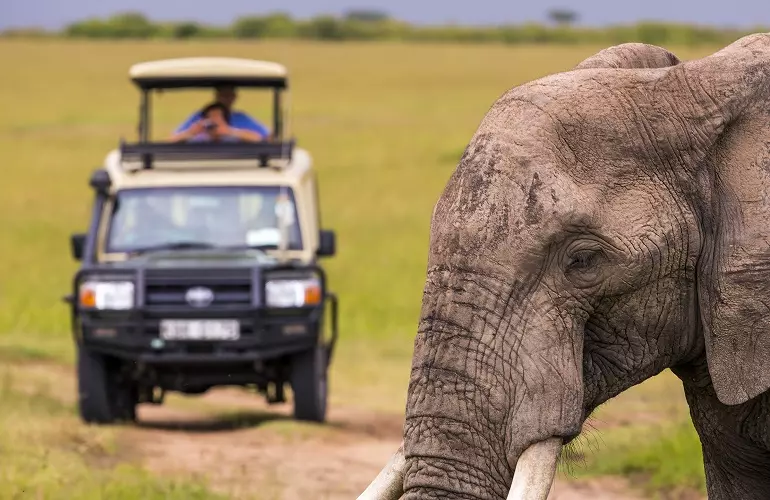
4. Best African safari experience
Safari tours in the Ngorongoro Crater offer a unique opportunity to explore and witness wildlife in a compact and concentrated area.
Game drives are the primary activity, allowing visitors to traverse the crater floor in search of wildlife, guided by experienced safari guides.
The scenic beauty of the crater, with its lush grasslands, acacia woodlands, and shimmering soda lakes, adds to the overall safari experience.
The Ngorongoro Crater provides exceptional photographic opportunities due to its proximity and abundance of wildlife.
5. Cultural Significance
The Ngorongoro Conservation Area is not only renowned for its wildlife but also for its cultural significance.
The Maasai people have traditionally inhabited the area and continue to practice their traditional pastoralist way of life, coexisting with wildlife.
Interaction with the Maasai and visits to their villages can provide insights into their rich culture and traditions.
6. Accessibility and Permits
The Ngorongoro Crater is accessible by road from Arusha, and the journey takes approximately 3–4 hours.
Permits are required to enter the Ngorongoro Conservation Area and access the crater. These permits are usually arranged by tour operators or can be obtained at the entrance gate.
What animals can be found in the Ngorongoro Crater?
The Ngorongoro Crater is home to a diverse range of wildlife. Some of the animals that can be found in the crater include lions, leopards, elephants, buffaloes, zebras, wildebeests, hippos, hyenas, cheetahs, and various species of antelopes. The crater is also a great place to spot rare species such as the black rhinoceros and the African wild dog. Additionally, there are over 400 species of birds that can be found in the area.
How was the Ngorongoro Crater formed?
The Ngorongoro Crater was formed over two million years ago, when a massive volcano erupted and collapsed on itself, leaving behind a caldera or large crater. The crater is approximately 610 meters deep and covers an area of about 260 square kilometers. Over time, the caldera filled with water, which eventually receded, leaving behind the unique ecosystem that exists today. The Ngorongoro Crater is now home to a wide variety of wildlife, including lions, elephants, rhinos, and many species of birds. It is also a UNESCO World Heritage Site and a popular tourist destination in Tanzania.
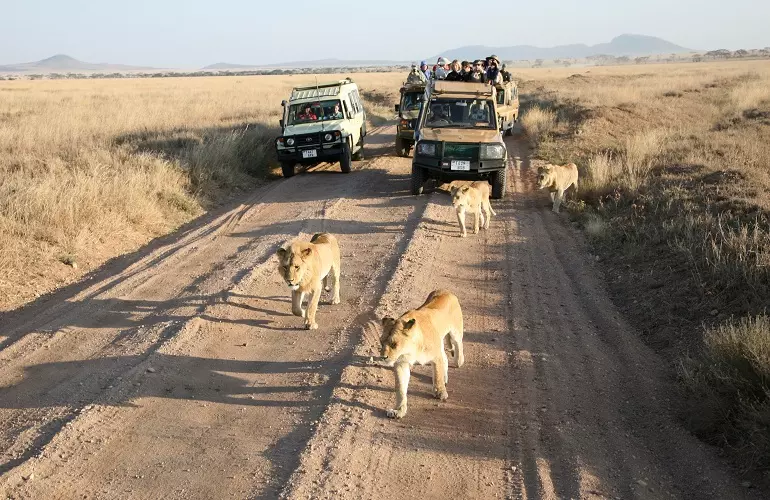
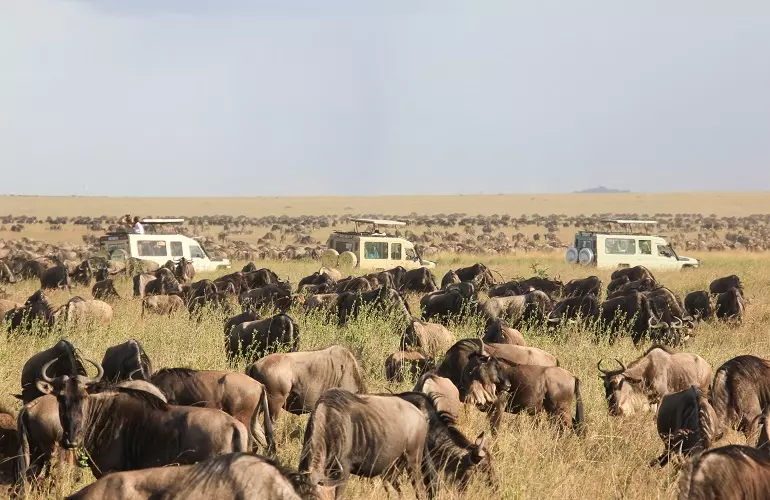
Is it possible to visit the Ngorongoro Crater?
Yes, it is possible to visit the Ngorongoro Crater. In fact, it is one of the most popular tourist destinations in Tanzania. The crater is a conservation area and a UNESCO World Heritage Site, known for its stunning scenery and diverse wildlife, including lions, elephants, zebras, and more. Visitors can take guided tours of the crater floor and surrounding areas, go on safari drives, and even visit nearby Maasai villages to learn about local culture. However, it is important to note that there are rules and regulations in place to protect the environment and wildlife, so visitors should respect these guidelines during their visit.
What is the best time of year to visit the Ngorongoro Crater?
The best time to visit the Ngorongoro Crater is during the dry season, which runs from June to October. During this time, the weather is dry and sunny, making it easier to spot wildlife as they congregate around the water sources. Additionally, the roads are more accessible, making it easier to navigate through the park. However, keep in mind that this is also the peak tourist season, so the park may be crowded. If you prefer a quieter experience, consider visiting during the shoulder seasons of January to February or November to December, but keep in mind that these months may have more unpredictable weather patterns.
Do you need a satisfied Ngorongoro Crater tour trip?
Get a free, best price-guaranteed Ngorongoro Crater tour trip quote and a quick response from us in 2024 and 2025. Call +255 747 989 416 on WhatsApp or email us at exploreafrica024@gmail.com to get a free quote. We are available 24/7 and we are happy to help you.
Best African and world-famous Ngorongoro Crater in Tanzania